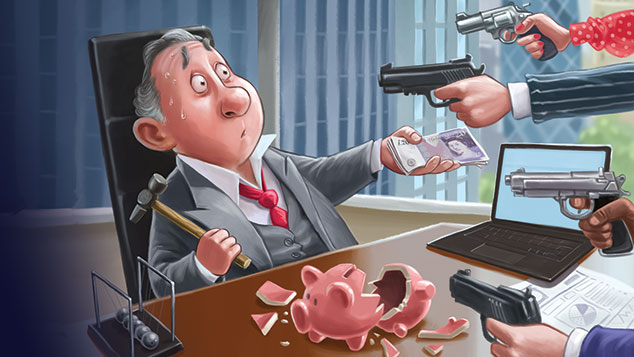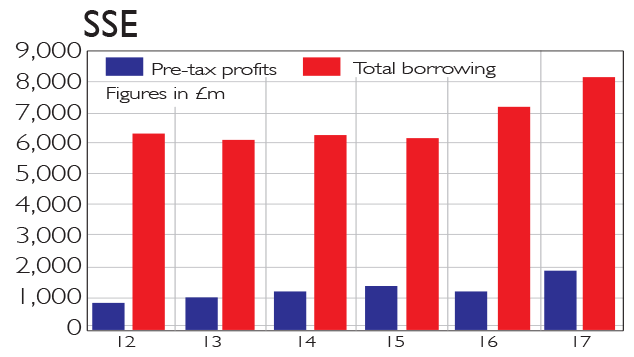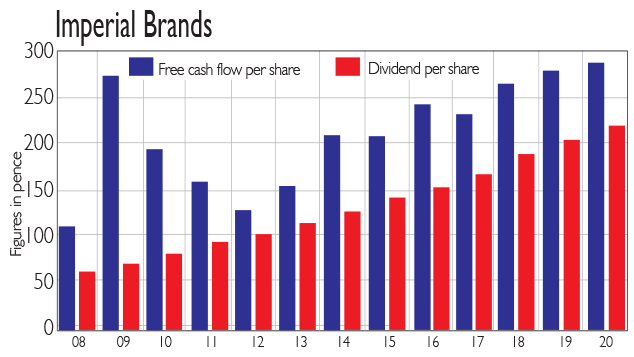Three high-yielding stocks to buy now – and three more to avoid
Stocks with big dividends can provide a reliable income in this tough environment – but high yields can be a sign of impending disaster. Phil Oakley explains how to spot the difference

Stocks with big dividends can provide a reliable income in this tough environment but high yields can be a sign of impending disaster. Phil Oakley explains how to spot the difference.
Our current era of rock-bottom interest rates has been miserable for anyone trying to generate a regular income from their investments. In turn, that's helped to make shares offering high dividend yields look very tempting to many yield-starved investors. However, investing in high-yield shares without doing your homework is highly risky. The stockmarket rarely puts on a free lunch except perhaps when markets in general are depressed and in many cases high yields are a sign of danger. Construction and support-services disaster Carillion was a classic case of this. However, as with many things in life, there are some notable exceptions to general rules. So I'm going to talk you through some tools that you can use to identify both the stocks you should avoid, and the high-yielding shares that can maintain or grow their dividends.
Why the high yield?
Generally speaking, there are four main reasons why a company might offer an unusually high dividend yield. Firstly, investors may be worried that the dividend is set to be cut or scrapped. So they sell out, which causes the share price to fall and thus the yield to rise. Secondly, if the rate of dividend growth slows, this tends to lead to a rise in the yield, as investors stop "pricing in" as much future dividend growth. Thirdly, a company may make a deliberate choice to pay out most of its profits as dividends if it does not need to hang on to its cash to fund new investments or growth projects. Finally, the shares may simply be genuinely undervalued, having been harshly treated or overlooked by the market.
MoneyWeek
Subscribe to MoneyWeek today and get your first six magazine issues absolutely FREE

Sign up to Money Morning
Don't miss the latest investment and personal finances news, market analysis, plus money-saving tips with our free twice-daily newsletter
Don't miss the latest investment and personal finances news, market analysis, plus money-saving tips with our free twice-daily newsletter
So how can you avoid the shares that might let you down? There are many dividend safety checks you can carry out, by crunching numbers and calculating certain financial ratios, such as "dividend cover" (how many times dividends are covered by profits). But to get a proper picture of dividend security, you must remember that these numbers are generated by a real business, which is producing the underlying profits to pay this dividend. Good investing is all about understanding the business behind the share as much as you can. The reason why many dividends come under threat is because the company's performance deteriorates, putting pressure on sales and profits.
This could be due to any number of factors: rising competition; the loss of a major customer, patent or contract; a failed business strategy such as entering a new market or country; overpaying for a large acquisition using borrowed money the anticipated profits fail to materialise but the debt interest still has to be paid; or actions by competition authorities or industry regulators, which force reductions in the prices of a company's goods or services (this is a big risk with regulated utilities such as water or electricity network companies, for example).
Going under the bonnet
In short, a high dividend yield is often a sign that investors have serious concerns about a company's future prospects. Your job is to find out why. The best way to do this is to find out as much you can about the company and its history. Visit its website to see what products and services it sells. Read its annual report. Check out its investor presentations and find out how it has been getting on. Then ask yourself the following simple questions:
How does the company make money?
If you can't say for sure, then don't waste any more time on it. You will never be comfortable owning its shares if you don't understand it.
Is this a steady business or a cyclical one?
Cyclical businesses such as housebuilders or engineers (where profits rise and fall with the state of the economy) often cut their dividends during harsh recessions.
Does this business have lots of competition?
Increasing competitive threats can hurt profits.Pay particular attention to any comments a company makes about its competitive environment.
How will it make more money in the future?
Be wary of companies that grow by buying other companies (ie, by acquisition). This can give a misleading picture of how good a company really is.
How good is the management team?
How long have they been there? Do they have good track records? Do they own lots of shares in the company?
Then you can move onto analysing the company's financial performance. This is a great way of both enhancing your understanding of it, and ultimately helping you to work out if its dividend is safe. Here are some quick checks to run:
Are profits rising or falling?
You want to see stable or rising profits.
What is happening to profit margins?
Falling margins can be a sign of trouble. Be wary of businesses with very low (sub-5%) margins, as profits can turn to losses if trading conditions deteriorate.
Is trading or operating cash flow rising or falling?
You can't pay a dividend without cash. Falling cash flow makes this harder.
Are debts rising or falling?
Rising debts means higher interest bills, and less money for dividends.
Are there big pension-fund deficits or long-term rental agreements?
These are significant liabilities that need cash to pay them off, which in turn eats into the amount of cash available for dividends, in the same way that debt interest does.
Three companies with doubtful dividends
Companies generally do all they can to avoid cutting their dividends in fact, some become slaves to their payouts. This is where a company stubbornly continues to pay a dividend that it can't really afford, given the size of its profits and cash flows. Sometimes these companies can tough things out and improve profitability and cash flows to maintain their payouts but often the stockmarket's pessimism is well founded.
Below I've looked at three shares where investors might want to consider the sustainability of dividend payouts. There's no guarantee the dividends will be cut but the high yields on offer come with other signs of growing risk. The biggest threats to all three of these big-name companies are weak or weakening free cash flows and difficult business conditions.
GlaxoSmithKline
Dividend growth at Glaxo has ground to a halt in recent years. It has struggled to develop new lucrative products to counter the effect of its existing drug patents coming to an end and, as a result, has found it difficult to grow its profits and to generate enough cash to pay its dividend. This has weighed heavily on the share price Glaxo shares changed hands for more than £17 last summer compared with just over £13.50 at the time of writing.
Profit growth looks as if it will remain hard to come by over the next couple of years as Advair, the company's top-selling respiratory drug, is now off-patent and faces a growing threat from cheap generic competition. Competitive threats to its HIV drugs also worry some analysts. The pressure is on new chief executive Emma Walmsley to turn things around and get more out of its research and development spending. Cost-cutting may free up some cash to maintain the dividend per share (DPS) at 80p in 2018 (giving a yield of 5.7% see box on page 26), but the future of the payout is less certain from 2019. Optimists point to the profits that could come from a shingles vaccine and the possibility that treatments for blood cancer could turn out well. But overall, Glaxo has to do more to reassure shareholders that their dividend payments are safe.
SSE
(LSE: SSE)
Utility giant SSE has increased its dividend every year for the past 25 years. But dividend growth in recent years has slowed sharply and dividend cover is now very thin at 1.2 times profits. Meanwhile, dividends are not covered by free cash flow (FCF) at all, as the company invests heavily in its electricity grids and networks and wind farms. The problem is that pre-tax profits have gone essentially nowhere for the last few years while borrowing has grown (see chart).

The hope is that the investment in wind farmswill produce a growing stream of extra profits, keeping the dividend safe. However, political pressure on the industry regulator is high right now, so there is a chance that profits at the regulated electricity-networks business will be cut when new price controls come in from 2021. While SSE has promised to raise dividends by the rate of inflation until then, if the price controls happen the dividend may have to be cut.
BT
In recent years, BT has had more than enough free cash flow to keep growing its dividend. However, rising investment costs at its Openreach unit, which are required to improve the broadband network and keep the regulator off its back, could be a real threat to the dividend. BT has been accused of skimping on investment and trying to deliver superfast broadband on the cheap by squeezing more capacity out of its old copper network. Openreach has been a cash cow for BT in recent years, but rising spending could vastly reduce the free cash flow from this business.
Meanwhile, the rising cost of sporting rights is draining cash flow and brings little if any profit in return. BT has become a big player in televised sport to protect and grow its share of the UK broadband market. This strategy is becoming very expensive BT Sport doesn't look as if it contributes any profits on its own and could get even more so. However, while any loss of Premier League football rights in the upcoming auction may save cash, it could make it harder for BT to keep hold of its broadband customers. But the main elephant in the room is the ballooning pension-fund deficit. Despite ploughing lots of extra cash into the pension scheme in recent years, the deficit (the gap between the scheme's liabilities to pay pensions and the value of assets in the pension fund) has remained stubbornly high. Investors should see a pension-fund deficit as a form of debt which has to be financed with cash before dividends are paid.
The high-yielders that might just keep delivering
Having highlighted three stocks whose chunky dividends might not be safe, here are another three whose dividends look relatively safe to my mind.
Manx Telecom
Manx is not the most exciting business in the world, but it should prove a reliable dividend payer. The company provides telephone and broadband services on the Isle of Man. It also has a data-centre and IT-services business, which together create a business that throws off a decent amount of free cash flow. Manx should be able to grow modestly over the years ahead by getting more customers to switch to high-speed broadband, while keeping a tight rein on costs. This in turn should keep the dividend growing. You are unlikely to get very rich owning Manx's shares, but the 6% yield might make it one to buy and hold while reinvesting the dividends.
Imperial Brands
(LSE: IMB)
Tobacco stocks are not for everyone, but theirability to keep paying dividends through thick and thin has been very impressive. Imperial has grown its annual dividend by 10% a year for the past nine years, yet the shares offer a forecast yield of 6%, which implies that investors think this trend cannot last. The company has followed a similar strategy to its larger peer British American Tobacco in focusing its selling efforts on key brands and defending market share in key countries. It is also developing new vaping and heated tobacco products.

The shares have fallen from above £39 lastspring to under £32 today. The company is often touted as a possible takeover candidate in a consolidating tobacco industry, but has yet to attract the attention of a buyer. Yet by keeping a tight lid on costs and becoming more efficient, Imperial has produced more than enough free cash flow to pay its dividend, and analysts think this will continue for a while yet, as shown in the chart above. This in turn should support continued healthy rates of dividend growth.
Legal & General
Insurer Legal & General has made steady progress in recent years, but professional investors seem to be split on its business model and prospects. Profits at its traditional insurance business have struggled. To offset this, L&G has pursued a bold strategy of taking over final-salary pension schemes from companies who want to get rid of them. It has also beefed up its annuity business.
Some people worry that the transfer of pension-fund risks from companies to L&G may come back to haunt the insurer, or that regulators may demand more of a safety buffer (that is, more money) to ensure it can make good on its promises. This might reduce the ability to grow dividends. Yet so far, L&G is managing these risks well, and has plenty of reserves set aside to deal with any potential problems. This suggests that dividends are well placed to keep growing.
| Name | Price | Forecast DPS (p) | Div. yield | Div. cover | FCF div. cover | ROCE (see glossary) | Debt to enterprise value |
| BT | 274.9p | 15.8 | 5.7% | 1.7 | 1.7 | 11.1% | 44.9% |
| GlaxoSmithKline | 1,353p | 80.0 | 5.9% | 1.4 | 1.2 | 7.3% | 25.6% |
| SSE | 1,321p | 94.4 | 7.1% | 1.2 | 0.7 | 12.2% | 40.3% |
| Manx Telecom | 191p | 11.4 | 6.0% | 1.2 | 1.2 | 13.2% | 27.1% |
| Imperial Brands | 3,160p | 188.1 | 6.0% | 1.4 | 1.4 | 11.7% | 30.5% |
| Legal & General | 274.7p | 15.3 | 5.6% | 1.6 | n/a | n/a | 116.5% |
Get the latest financial news, insights and expert analysis from our award-winning MoneyWeek team, to help you understand what really matters when it comes to your finances.
Phil spent 13 years as an investment analyst for both stockbroking and fund management companies.
After graduating with a MSc in International Banking, Economics & Finance from Liverpool Business School in 1996, Phil went to work for BWD Rensburg, a Liverpool based investment manager. In 2001, he joined ABN AMRO as a transport analyst. After a brief spell as a food retail analyst, he spent five years with ABN's very successful UK Smaller Companies team where he covered engineering, transport and support services stocks.
In 2007, Phil joined Halbis Capital Management as a European equities analyst. He began writing for MoneyWeek in 2010.
-
 MoneyWeek news quiz: How much can you win in Premium Bonds?
MoneyWeek news quiz: How much can you win in Premium Bonds?Quiz Premium Bonds, ChatGPT, and the start of the festive season all made headlines this week. How closely were you following the news?
-
 Salary sacrifice pensions cap: 3.3 million workers to be hit by contribution limits
Salary sacrifice pensions cap: 3.3 million workers to be hit by contribution limitsThe government has revealed further details of its controversial cap on pension contributions through salary sacrifice. Here is how the changes could affect you